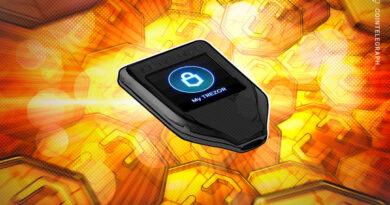Metal Pay’s New Blockchain Allows Bank and Payment Platform Integration
Metal Pay, with its new mainnet blockchain Proton, makes different banks and payment platforms compatible with each other, as well as the digital asset world.
Proton, a new delegated proof-of-stake blockchain from crypto payment solution Metal Pay, allows digital asset and fund transfers across multiple channels.
“It’s a Blockchain that’s integrated into your bank,” Metal Pay CEO Marshall Hayner told Cointelegraph. “It’s a universal network for payments.” As long as payment platforms integrate the Proton blockchain, customers can send payments across non-native platforms, according to Hayner.
Proton allows compatibility across platforms
At present, aside from Metal Pay, payment platforms often run as siloed entities, facing difficulties when users want to interact across services. If, for example, one person wants to send money to a friend on PayPal, both parties would need to hold PayPal accounts and operate within the walls of that one platform.
“The craziest part is that it doesn’t require any one platform,” Hayner said of Metal Pay and its Proton blockchain. Hayner explained further:
What Proton is, is a highly scalable blockchain smart contracting platform, but what’s really different and unique about it is this concept of fiat funding sources and linked identity.”
Metal Pay touts names instead of wallet address characters
Users of platforms that integrate with Proton’s blockchain can make a wallet showing a verified name in place of current crypto wallet addresses that tout lengthy strings of numbers and letters, explained Bitcoin millionaire Erik Finman, who has been working with Metal Pay.
Finman said Bitcoin (BTC) involves a “really complicated address that nobody can remember, and that’s great for what it’s good for,” although Metal Pay offers the simplicity of a username instead.
Metal Pay allows for a number of payment avenues meshed into one location, instead of the siloed, incompatible experience other payment solutions face. “This allows you to link multiple funding sources from the blockchain itself,” Finman said of the Proton blockchain — the glue that brings all the separate payment systems together.
Finman compared the experience to a decentralized Facebook login, adding:
But instead of it linking your social media profile information in a centralized way, this kind of links your funding sources in a decentralized way, so it’s just a very easy back end.”
Proton also has its own Proton (XPR) asset, with which customers can pay for wallet address creations, among other uses. Metal Pay also plans on releasing wrapped assets on the Proton blockchain, such as wrapped Bitcoin and wrapped Ethereum, blending crypto transactions directly into the equation.
Wrapped coins have picked up steam over the past two years, making Bitcoin compatible on other platforms and applications. The market saw Ethereum-wrapped Bitcoin (WBTC) launch in 2019, giving users a way to trade BTC on decentralized exchanges.




